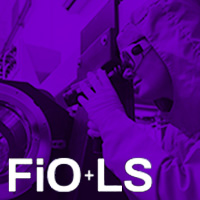Abstract
Laser-Induced Breakdown Spectroscopy (LIBS) is a spectroscopic technique for real-timequantitative and qualitative analysis of samples in different phases of matter (solid, liquid, gaseous) [1, 2]. LIBS can be applied among others to study of aqueous solutions even with trace element content, e.g. for measurements of environmental water pollution. Here the measurements of trace amounts of heavy metals in liquid samples using LIBS are discussed. The newly constructed modular apparatus for liquid samples can be directly attached to the current experimental setup of single-pulse and double-pulse LIBS (SP and DP LIBS). The narrow steady flow of the investigated liquid is realized with combination of peristaltic pump and in-house made jet. Second harmonic frequency of pulsed Nd:YAG laser (LQ529A, Solar) is used for plasma creation. The laser beam is focused on the liquid flow, small amount of liquid sample is ablated and radiating micro-plasma is created. Second Nd:YAG laser pulse (Brilliant B, Quantel) is used for reheating of already creted plasma in DP LIBS arrangement. The plasma emission is collected by a custom-made telescope, focused into the optical fibre and led to the spectrograph in Echelle configuration (Andor, Mechelle).
© 2011 Optical Society of America
PDF Article
